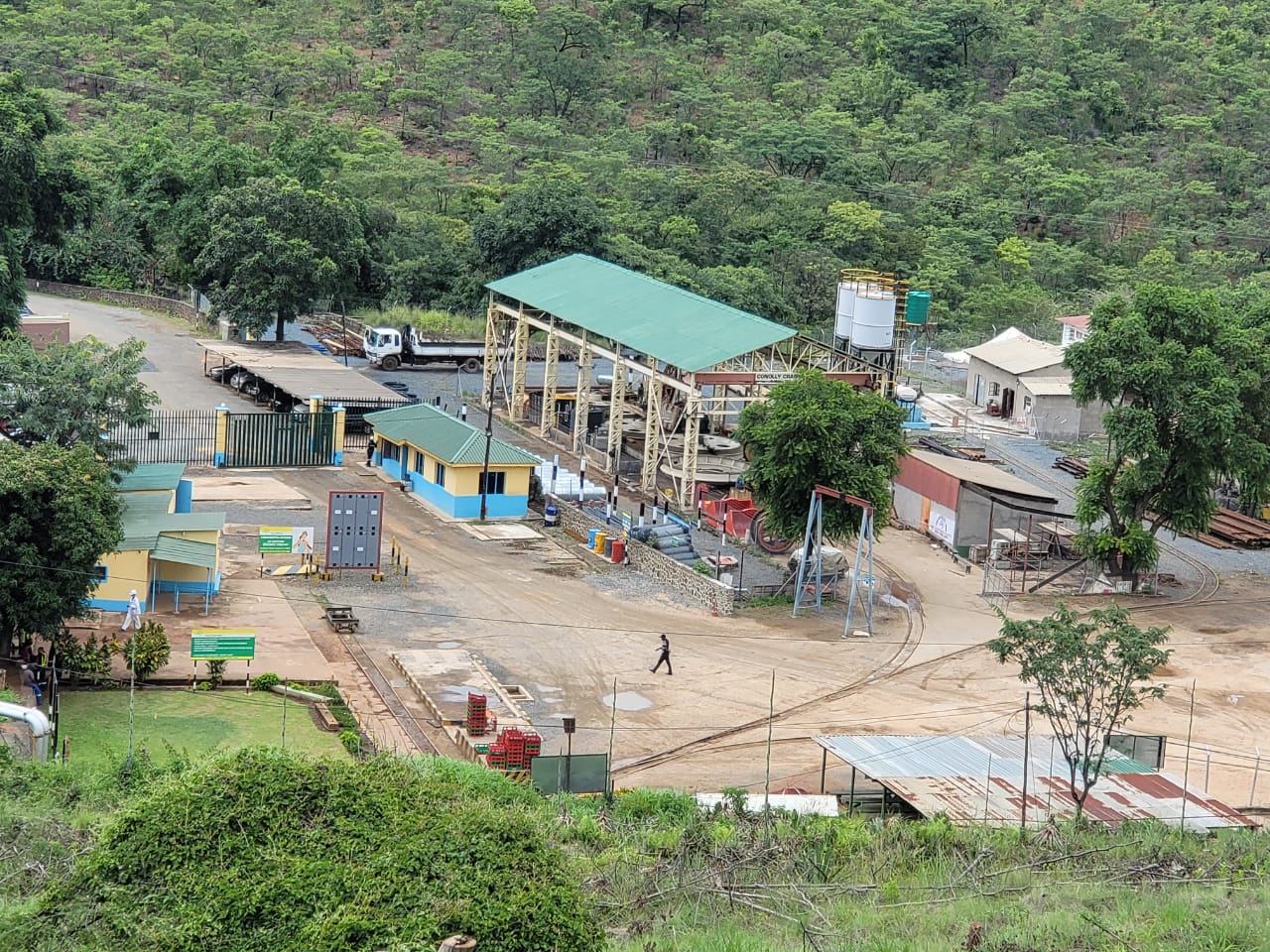AMMZ conducts a technical visit at BNC

The Association of Mine Managers of Zimbabwe (AMMZ) on the 7th of July 2023 conducted a technical visit at Bindura Nickel Corporation (BNC) in Mashonaland Central where different stakeholders within the mining industry including mine Managers, service providers and students graced the event.
Rudairo Mapuranga
Discussions at the Event were centred on the concerns of service providers and production performance at the Kuvimba Mining House (KMH) owned Nickel producer.
While the visit was an insight to service providers due to exposing situations and challenges in the sector and for them to find opportunities in those challenges, the participation of students at the technical visit was a takeaway for many mine Managers.
Speaking to Mining Zimbabwe on the sidelines of the technical visit AMMZ Vice President Engineer Abel Makura said the participation of students at these events was encouraging as this would empower the students to carry the mining industry to a greater height in future when they become decision makers.
“This technical visit was different because we had an opportunity to see students taking part for the second time. The students are the leaders of tomorrow, these visits will expose them to real industry challenges and how they can come up with solutions way before they become captains of the industry. As an Association, we would be happy if we have students more often on these visits,” Engineer Makura said.
During technical discussions at the event, service providers lamented the situation where mining companies take pride in late payments resulting in the service providers more often suffering losses since prices would be pegged mostly in RTGS which of late has been losing value due to inflation.
Suppliers also raised concerns centred on late payments.
“We have seen that as an industry we are disadvantaging Suppliers at the same time disadvantaging the industry because some of the services we would need might end up becoming expensive. We will find ways to make sure that the challenges facing service providers have been dealt with,” AMMZ Vice President said.
Speaking to Mining Zimbabwe a student from the Midlands State University (MSU) Tawanda Talent Muchena who took part in the technical visit encouraged other students to find time to be part of the visits.
“My advice goes to the rest of the students who are in the mining departments or mining-related programs. AMMZ Technical visits are events where you get to network and rub shoulders with industrial captains, Miners, metallurgists, and geologists, amongst other professions. This is a platform where people get to share ideas, knowledge and synergies. In addition, the AMMZ Technical visits are events where students can get a better understanding of how mining is carried out and be able to differentiate or rather correlate the academic concepts of mining cycles and real word mining cycles hence the need to attend AMMZ Technical visits amongst others,” Muchena said.
He said he had managed to learn a host of ideas including the mining methods used at BNC.
“The AMMZ BNC visit was a well profound and fruitful event. Personally, I learnt a significant number of things notably, the mining method used which is sublevel caving.
“Sublevel caving is an underground mining method in which the ore body is undermined, causing it to cave or collapse under its own weight. This creates a series of interconnected caves or voids, through which the ore can be recovered. The remaining rock is left in place for stability.
“At BNC the ore is mined from top to bottom, the makes it easy to utilise the ore pass. Gravity acts as a force that forces the ore to descent to lower levels, at around level 37 the Electric LOCOs then carry the ore to the crusher where the ore is crushed to the required size before it is transported to the last level where it awaits for hoisting to the stockpile for processing.
“Lastly the issue of ore grade was of interest as the mine now utilises the low-grade high volume method, unlike in the past few years where they used the high-grade low volume method. The shift from high-grade low volume to low-grade high volume has been a result of depletion of High-Grade Deposits amongst other reasons,” he said.
Presenting at the Event BNC Geology Superintendent Renious Tirivabaya who is also ZINIRE President said production performance has been negatively impacted by a decline in the footprint of the high-grade massive resource which necessitated a rapid transition in the mining model from a low-volume, high-grade strategy to a low-grade, high-volume strategy.
“In terms of strategy, we are shifting our strategy from high-grade to low-grade high-volume strategy. On the foot of the main ore body that where your massive is, the in terms of depression of the massive it’s not a physical depression that is visible to the naked eye but if you look at the size of the massive in terms of pursing it, the way we were doing it it’s no longer viable. Previously we would develop a level, and mine it for 3-4 months, now when you develop that short stripe massive you develop for 3 months and stay there for 1 month so it was no longer viable for us hence the need to change the strategy,” Tirivabaya said.
This article first appeared in the Mining Zimbabwe Magazine issue 66. Download HERE


